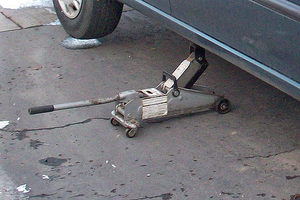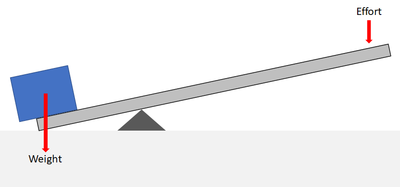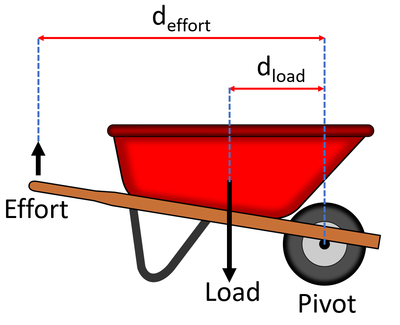Difference between revisions of "Lever"
| Line 30: | Line 30: | ||
| style="height:20px; width:400px; text-align:center;" |A lever makes it easier to lift a heavy object. | | style="height:20px; width:400px; text-align:center;" |A lever makes it easier to lift a heavy object. | ||
|} | |} | ||
| + | |||
| + | ===Extra Information=== | ||
| + | {{#ev:youtube|https://www.youtube.com/watch?v=YlYEi0PgG1g}} | ||
==Key Stage 4== | ==Key Stage 4== | ||
Revision as of 17:40, 20 April 2019
Contents
Key Stage 2
Meaning
A lever is a tool which can be used to make lifting easier.
About Levers
- Levers are used to lift cars with a jack, pull out nails with a hammer and to break locks with a crowbar.
- A lever needs a long stiff rod and a pivot.
- A seesaw can work as a lever. If an adult sits close to the centre and a child sits at the far end, the child can lift the adult.
| A lever makes it easier to lift a heavy object. |
Key Stage 3
Meaning
A lever is a Force Multiplier or a Distance Multiplier that uses a pivot to create a moment.
About Levers
- Levers are used to lift cars with a jack, pull out nails with a hammer and to break locks with a crowbar.
- A lever needs a long stiff rod and a pivot.
| A lever makes it easier to lift a heavy object. |
Extra Information
Key Stage 4
Meaning
A lever is a Force Multiplier or a Distance Multiplier that uses a pivot to create a moment.
About Levers
- Levers work as force multipliers by applying a force of effort at a greater distance from the pivot than the force of load.
- A lever needs a long stiff rod and a pivot.
| The force of effort is 3 times further from the pivot than the force of load, so the effort is 3 times smaller than the load. |


